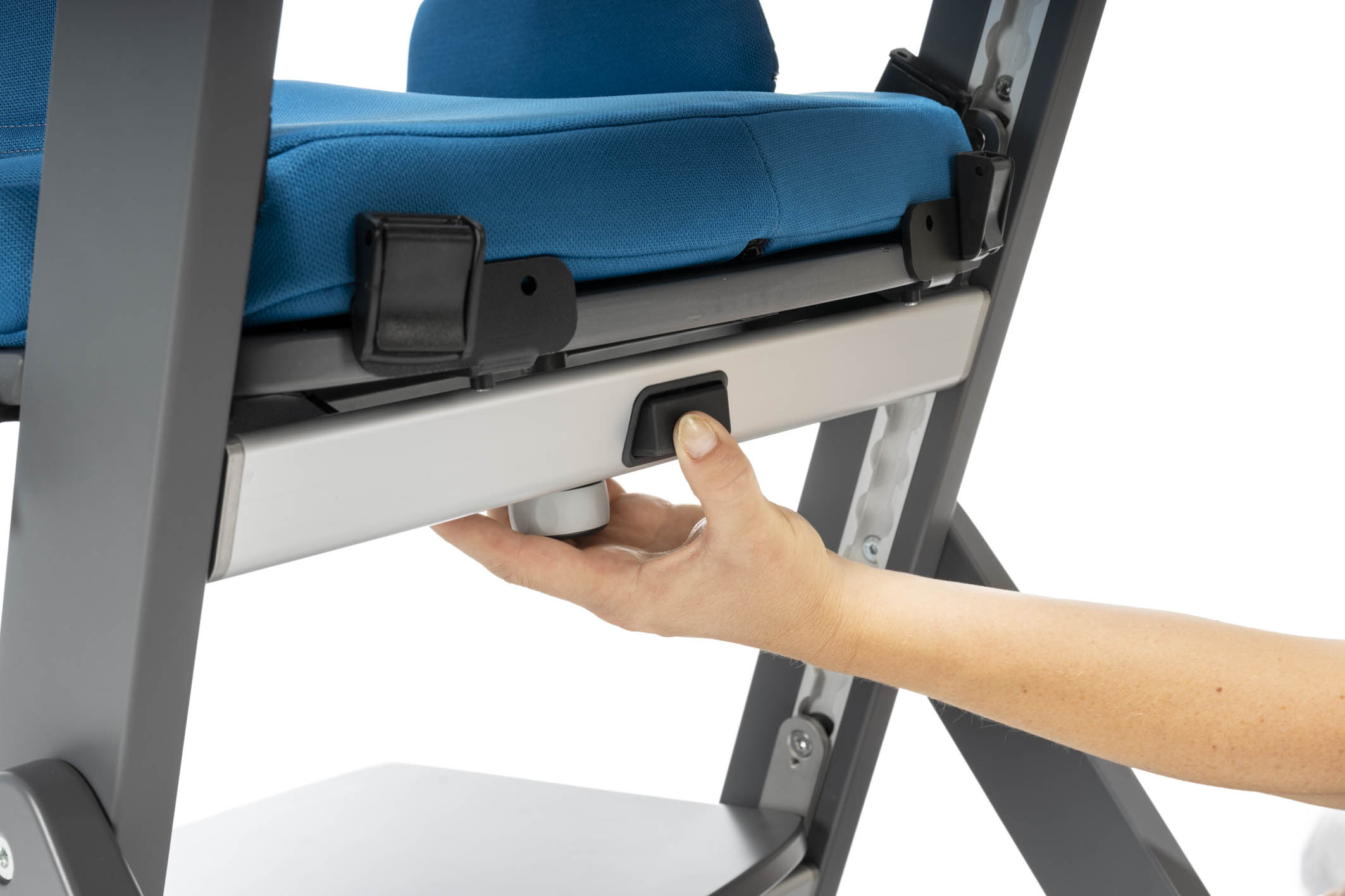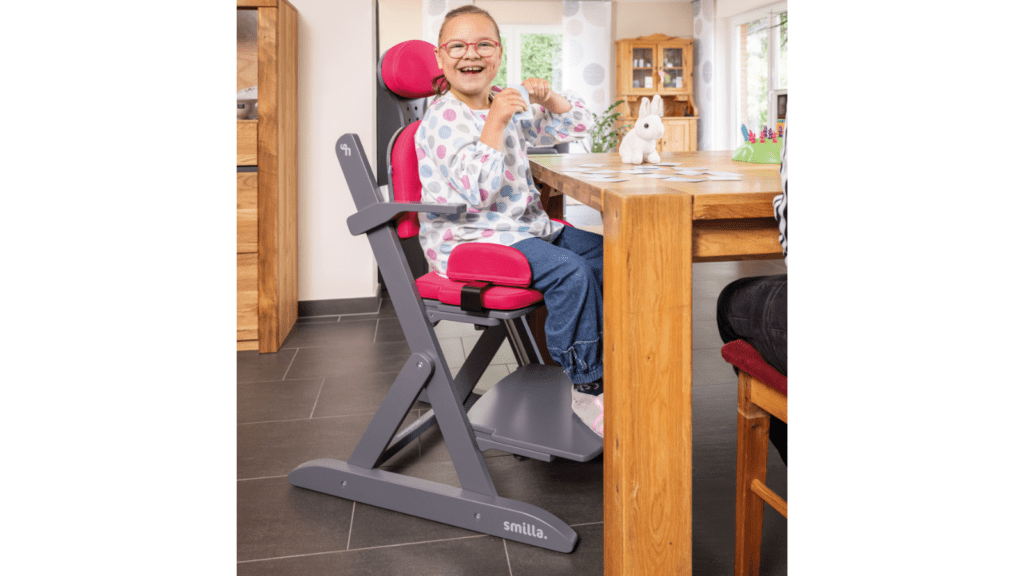This article was written by Schuchmann regarding ‘smilla.’ a therapy seating aid.
For forty years, we have been manufacturing rehabilitation aids of the highest quality and with great attention to detail. When we develop a new product, it is not only our own experience that plays a major role; but, more importantly, the individual needs and experiences of the families involved. It is important to us that a child with a disability finds exactly the right aids that suit them perfectly and enrich and facilitate their lives.

It is of central importance to us that an aid meets the aesthetic requirements of children and young people – and their social environment. This aspect is particularly important in the area of therapy chairs. After all, the seating aids are often located where the whole (family) life takes place.
Perfect integration in the home environment
Assistive products should blend into the living space and be as unobtrusive as possible. We hear this tone from many conversations with parents and carers. Our ‘smilla.’ therapy chair achieves this particularly well. ‘Smilla.’ is made of beech wood and is available in natural, white or slate grey. In addition to the frame colour, it is the upholstery and covers that give the chair that certain something and the necessary comfort. For ‘smilla.’ we offer covers in the colours pink, deep sea blue, leaf green, slate grey and flexi navy blue. In addition to certified high-quality fabrics, we also offer name embroidery for the backrest upholstery. This often significantly increases the acceptance of the aid among children and young people. This is because they can better identify with their chair.

Attractive appearance – not only in your own home
What applies to living spaces also applies to institutions and educational facilities. Children and young people also want seating that blends in as well as possible in this environment too. Warm wood colours, as with the ‘smilla.’, blend harmoniously into the classroom or group room. To meet the needs of users, our wooden therapy chair is therefore available in five sizes. Two of these are special school specific sizes that fit well under the low table heights in schools or nurserys. It is particularly important there that the chairs can be adjusted quickly and almost without tools, in addition to design, we therefore attach great importance to functionality: ‘smilla.’ is equipped with a smooth-running height adjustment system and can now be adjusted quickly and easily – simply at the touch of a button.

New activities through correct sitting
The ‘smilla.’ therapy chair doesn’t just look good, above all, it enables children to sit in the correct position. At family meals, independence is increased if the seat height is correct and the arms are not needed to hold on to. At the daycare centre, the children sit at eye level with their friends, which makes playing easier. Fine motor skills, posture control and the ability to get on and off the chair on their own – these are important aspects of everyday life. And we also want to offer them to children with developmental delays.

Current trends as a source of inspiration
Our in-house design engineers and product designers find inspiration at furniture trade fairs. We follow current trends in the development of our products to maximise acceptance among those affected. An aid that is visually appealing is more likely to be used. Only an aid that is used can achieve and encourage therapeutic success. We also receive inspiration for the design of our products from the families and children themselves. Our sales force is our greatest source of knowledge in this respect, alongside our colleagues and customers working in the NHS and social services. The feeback we gather from those affected goes directly back into our design and development department on a one-to-one basis.
Advantages for disability processing
For many families, a visually appealing aid makes it easier to come to terms with their disability. Being confronted with a chronic illness or disability can really shake up your life. Many affected people want stability in the form of a safe home with familiar sights. The arrival of aids is sometimes difficult to digest, as it clearly shows that everyday life may change. Families can rate the aids they use on an internet portal. It quickly becomes clear what is important. The feedback on ‘smilla.’ is as follows:
“… the chair offers a beautiful and unobtrusive look.”
“… the design really appeals to me.”
“… and pretty too.”
“… visually it also looks like a piece of household furniture.”
“… we think it’s great. Especially that it doesn’t look so much like rehabilitation aid.”
Highest standard – attractively designed
Parents favour products that meet their aesthetic requirements despite their complexity, so that they can get used to the aid. Highly technical functions are necessary and desired, but should be installed as discreetly as possible. There is a great desire for a living environment that does not stand out from the familiar despite the assistive devices.
Combining these demands is the exciting challenge we face as a manufacturer of therapy aids – and one that we are happy to take on. The combination of design and functionality has worked well for us in the past and this is how we will continue to design and manufacture; with a great attention to detail. Because that’s what makes the difference.



Comments are closed